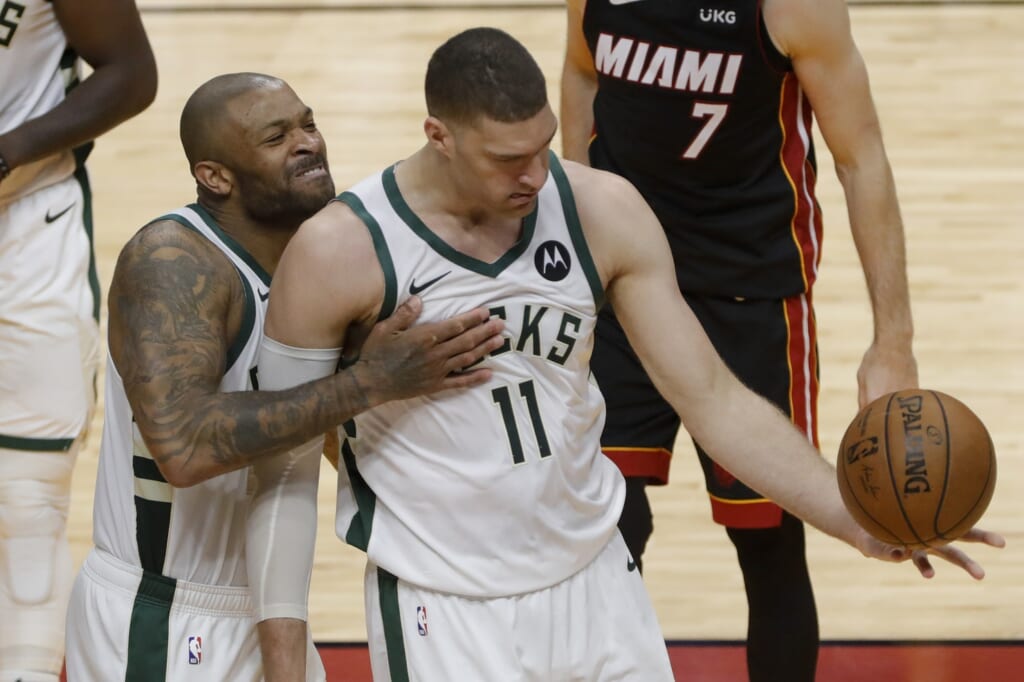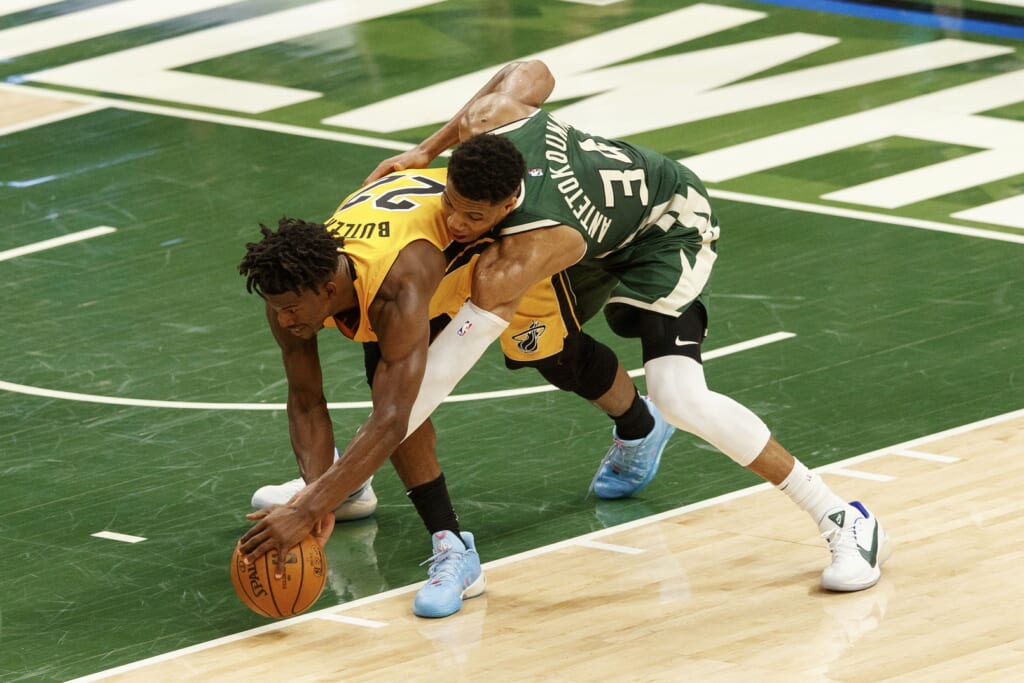The Miami Heat capped off their 2020-’21 season with a loss to the Milwaukee Bucks on Saturday afternoon. After a close Game 1, the Bucks took control of each contest and blew out the Heat in three straight games.
It was a very disappointing end to Miami’s season, one derailed by COVID-19, injuries, and a short offseason. The Heat never seemed to truly hit their stride at the right time before facing Milwaukee and it led to a first-round exit.
There are many reasons why Miami couldn’t pull off the upset. But let’s examine the critical factors that sent the Heat home and will create key questions this summer.
Related: NBA games today – Full offseason schedule, including start of NBA free agency
Miami Heat went cold from the field
The story of this series is the volume of missed shots by the Heat. They struggled to put the ball in the basket from mid-range and the offense couldn’t find any rhythm until it was far too late.
Miami shot 38.0% from the floor through the first three games of the series. That would’ve been the worst field goal percentage in the NBA Playoffs since the Denver Nuggets (2005-’06). One of the biggest issues was missed open shots.
- Miami Heat stats (defender within 4-6 feet): 39.3% from the field
- Miami Heat stats (defender more than six feet away): 38.8% from the field
The most frequent coverage the Heat obviously faced was with the closest defender two to four feet (close) away. They shot 41.5% from the floor, which ranks just ahead of the New York Knicks in the second-to-last spot.
Looking at these statistics, there is no way the Heat could’ve won this series without better shooting. They ranked in the top half of most frequent open shots, but still ranked in the lower portion of field goal percentage with those attempts.
Miami’s offense was not the best all year, but its offensive struggles in this series were baffling. The Heat simply couldn’t convert and dug that hole even further on the offensive end of the floor.
Milwaukee Bucks dominated the glass

The Heat stood no chance against the Bucks when it came to rebounding the ball. Miami couldn’t prevent Milwaukee from bringing down offensive rebounds, which really hurt them throughout the whole series.
Miami allowed Milwaukee to bring down 15.3 offensive rebounds per game, which is the worst in the NBA Playoffs since the 2011-2012 Denver Nuggets allowed 16.1 offensive rebounds per game.
- Miami Heat stats (first round): 18.8 second-chance points per game (most)
The Heat were historically bad at gifting extra scoring chances to the Bucks. That is the second-worst since 2012-2013, with the first being the Brooklyn Nets (2018-’19) at 19.0 ppg.
Milwaukee led the playoff field in rebounds per game (59). No team has allowed more than 55.0 rebounds per game in an NBA Playoff series dating back to at least 1996-1997, that was until Miami took the court.
The Heat were destroyed in every aspect of the rebounding battle. Allowing 15.3 offensive rebounds per game and having the second-worst offensive rebound performance on offense is not a winning formula.
This contributes to the Heat’s poor shooting, but there is no excuse for the number of offensive rebounds they allowed. It wasn’t the main reason they lost the series, but it certainly contributed to their struggles.
Jimmy Butler never came into playoff form

Jimmy Butler claimed before the NBA Playoffs that he was “stupidly locked in.” Well, Butler’s performance was the most surprising thing throughout the series and not in a good way.
Butler averaged 14.5 points, 7.5 rebounds, and seven assists, shooting 29.7% from the floor in 38.5 minutes per game. No one expected Butler to struggle as much as he did in the playoffs, but we saw signs of it in Game 1.
The 31-year-old star shot 4-of-22 from the floor in the first game of the series. While he improved, his highest field goal percentage was 41.2% in Game 3 and the Heat were crushed 113-84 in that game.
Of players who attempted 15-plus shots per game, Butler trails only Julius Randle, who is currently shooting 24.1% from the floor against the Atlanta Hawks. No one expected either to struggle the way they have thus far.
Butler’s production was there in other areas, but scoring was something he lacked throughout the series. He never scored 20 or more points in a single game and his Game 1 performance of 19 points was his highest scoring output.
The Bucks guarded Butler differently from last season and forced him to stop before he could get to the paint. Milwaukee’s defenders smothered Butler when he picked up the ball and his turnover in Game 1 might’ve cost Miami the game in that fashion.
Milwaukee’s defense kept him at bay, which was a huge reason why they swept Miami. Now, Butler goes into this offseason with these games under his belt and it’s like the Miami Heat were never in the playoffs.

